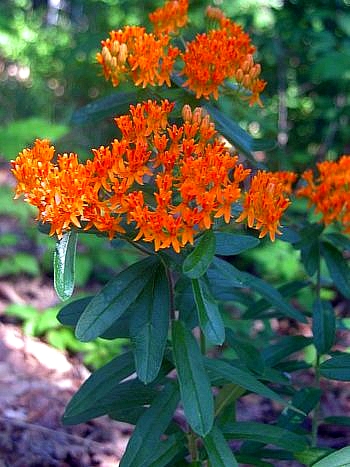Asclepias tuberosa
 |
 |
Photo courtesy Renee Brecht |
Britton & Brown |
| Botanical name: | Asclepias tuberosa L. |
| Common name: | butterfly weed |
| Group: | dicot |
| Family: | Asclepiadaceae |
| Growth type: | forb/herb |
| Duration: | perennial |
| Origin: | native |
| Plant height: | 1 - 2' |
| Foliage: | Stem is hairy; leaves are alternate, up
to 5 inches in length, stiff, narrow, and often wider at the base.
Sometimes the leaves are opposite near the inflorescense. |
| Flower: | 1/2", 1/2". Inflorescense is terminal and axillary umbellate cymes with approximately 25 flowers. |
| Flowering time: | Flowers June to September. Fruit is a pod with tiny seeds, each attached to a tuff of silky hairs. Wind-dispersed. |
| Habitat: | dry fields |
| Range in New Jersey: | statewide |
| Heritage ranking, if any: | n/a |
| Distribution: | |
| Misc. | USDA
lists as UPL, usually occurs in uplands. This is the only milkweed with alternate leaves. Medicinal Uses: Root was used in 19th century for lung problems, as a purgative, and was applied to sores. Asclepias tuberosa contains cardiac glycosides which are toxic in large amounts. Butterfly weed plant guide |